In our last blog we provided an overview of our progress cataloguing the Lewis Morley Archive and revealed some of the treasures within the collection.
This month, we’re excited to share some new updates about the cataloguing project and explore some of the photographs and items relating to Pauline Boty, an artist of the 1960s British Pop Art movement whose work has seen a resurgence of interest in recent years. In addition to appearing in many exhibitions around the UK, she was the subject of the 2025 BBC4 documentary ‘Pauline Boty: I am the Sixties’ as well as various academic studies.

Cataloguing the Lewis Morley Archive
The Lewis Morley Archive cataloguing project is now entering an exciting stage, with over 100 boxes of material ‘box listed’. This means each box has an initial content description and date range, recorded extents, conservation assessments and locations. Box listing captures basic information about the content of a box of material and helps us to make important cataloguing decisions about archival arrangement and series descriptions.
Now that the box listing stage is almost over, we can take this information to help us identify specific sections and general groupings of material, taking our lead from how Morley used the archive and arranged the material himself. The material in the archive includes a variety of photographs, such as Polaroids and Polaroid transfers, proofs and reference photos, as well as prints of portraits, fashion, advertising, theatre and reportage. It also includes vintage contact prints, negatives, cameras and related equipment, correspondence, exhibition materials and much more.
Our next step will be to arrange the archive material into these sections and to publish each series in stages on our online catalogue. This will enable researchers to access parts of the archive as soon as possible without having to wait for the entire collection to be catalogued.
Lewis Morley and Pauline Boty

Pauline Boty (1938-1966) was a British artist and actress known for her vibrant, colourful paintings which celebrated femininity and female sexuality. Working within the 1960s Pop Art movement, she often explored and criticised the “man’s world” in which she lived.
As a graduate of the Wimbledon School of Art and the Royal College of Art, she earned diplomas in both lithography and stained glass and enjoyed working in the medium of collage where she used figures from popular culture and politics in her work. In her short life, she produced many paintings and art pieces, but also appeared in theatre productions, films, television programmes and co-hosted a fortnightly radio show on culture and entertainment.
Lewis Morley first photographed Boty in 1959 during her time at the Royal College of Art, London. They later met professionally during the 1960s when Morley was photographing various figures in popular culture from his studio above Peter Cook’s The Establishment Club in Soho, London. As an emerging pop artist and actress, Boty became one of his many subjects and several of her portraits appear in the Lewis Morley Archive.

The Profumo Affair of 1963
As well as themes of femininity and sexuality, Boty also tackled current affairs and political subjects in her paintings. In 1963, she began work on a painting called ‘Scandal ’63’ which was her response to ‘the Profumo affair’ which dominated the news that year. The incident was a national (and international!) scandal involving 19-year-old model Christine Keeler’s relationships with the Conservative Secretary of State for War, John Profumo, and a Soviet Naval officer by the name of Yevgeny Ivanov. This was considered an international security risk at the height of the Cold War.
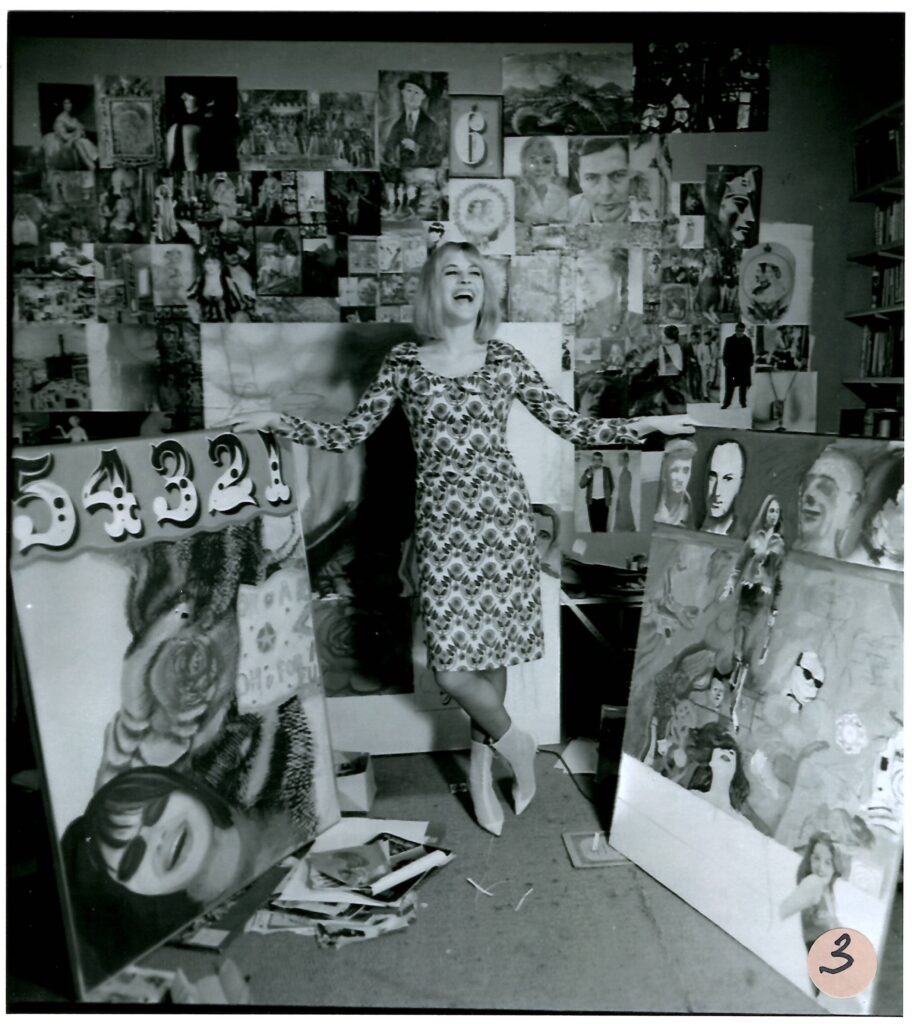
In the above image, Boty is photographed by Morley with an early, work-in-progress version of the painting. Boty painted Keeler as a central heroine with the four males involved in the scandal as smaller figures looming above. She first used a press photograph of Keeler leaving her flat as inspiration. However, in her final version of the painting, Boty erased much of the central imaging and replaced it with the pose from the famous Lewis Morley photograph of Keeler sitting nude on a chair. Her final painting altered the original pose slightly, showing Keeler as more confident and headstrong. Unfortunately, ‘Scandal ‘63’ is now considered a lost work.
Lewis Morley in Colour
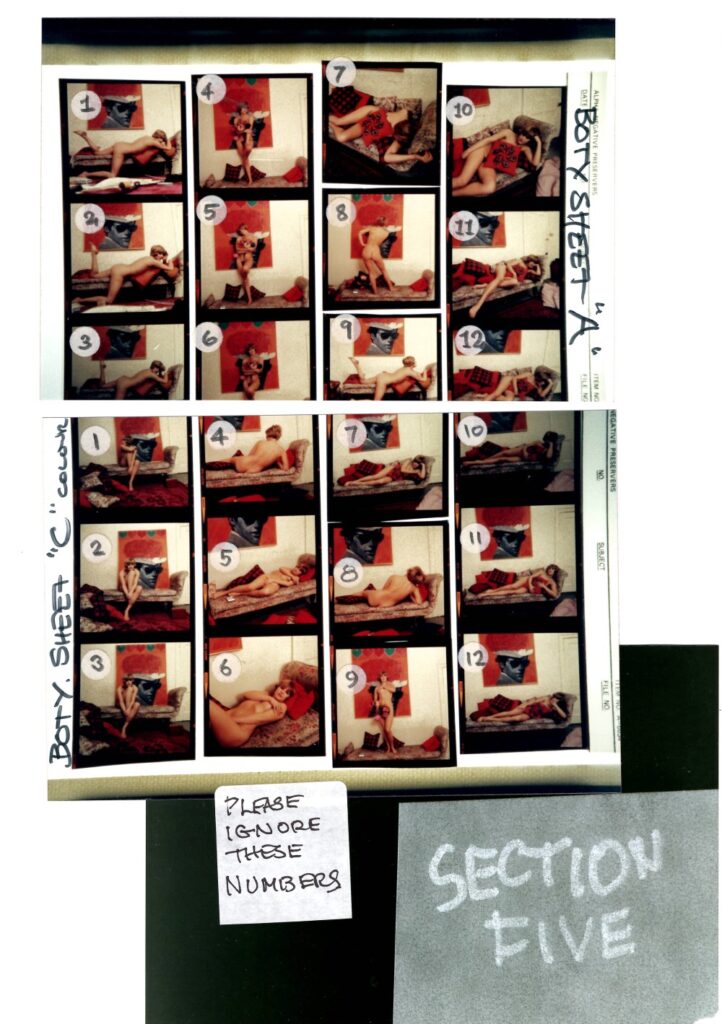
Pauline Boty often posed with her paintings, proudly showing herself as the creator of her pieces. In later sessions, Lewis Morley decided to shoot Boty in colour, capturing her vibrant personality and highlighting her distinctive presence within the cultural landscape of the 1960s.
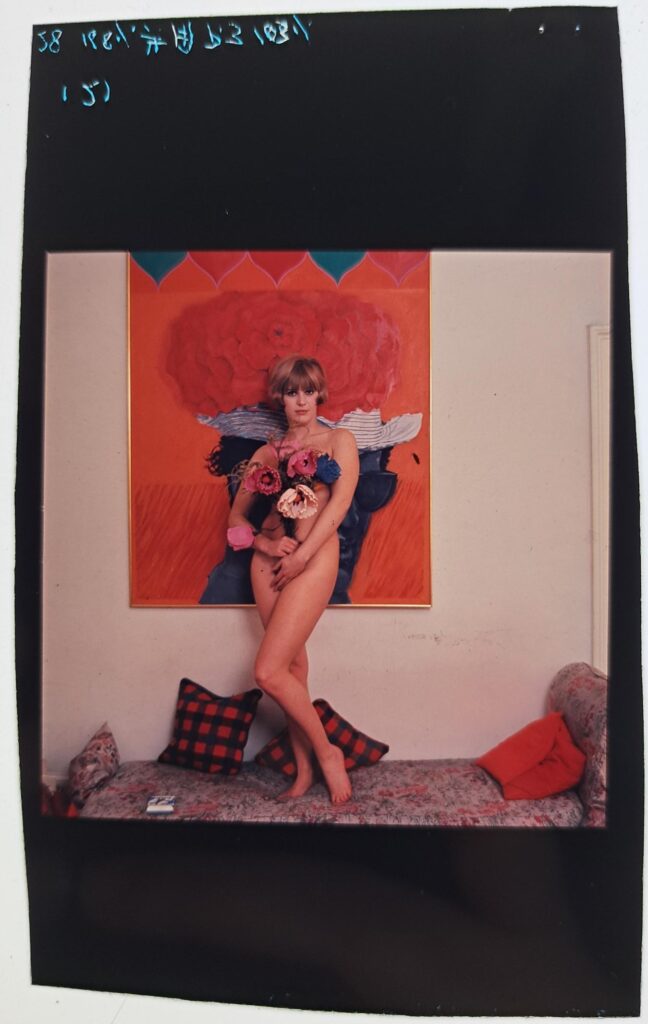
‘With Love to John-Paul Belmondo, 1962’ taken by Lewis Morley, c1964
Morley captured Boty posing in front of her painting ‘With Love to Jean-Paul Belmondo’ (1962) where she mirrors both Brigitte Bardot in the opening scene of ‘And God Created Woman’ as well as the original reference of Botticelli’s ‘The Birth of Venus’. Boty appeared proudly nude in many of Morley’s photographs and continued to be a prominent figure in popular culture until her untimely death in 1966.

‘With Love to John-Paul Belmondo, 1962’ taken by Lewis Morley, c1964

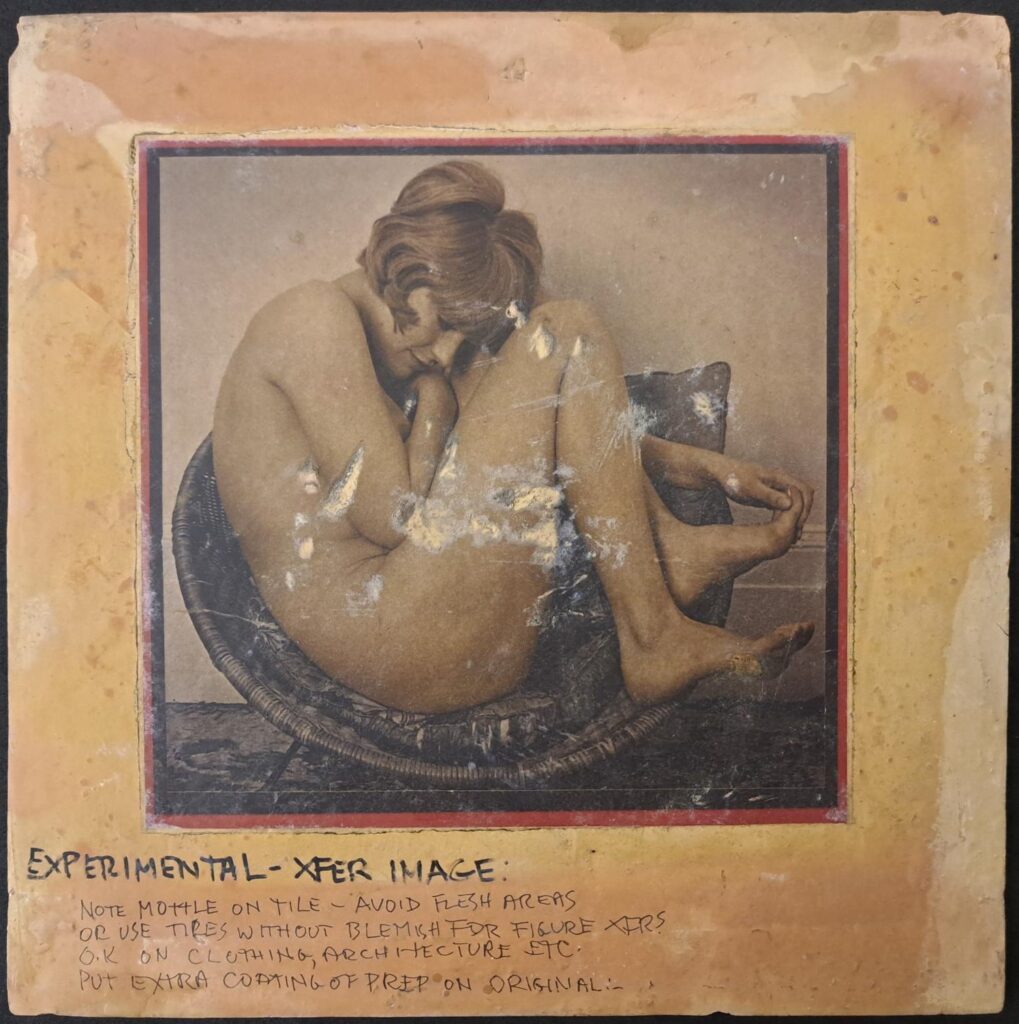
by Lewis Morley, 1990s [orginal image taken c1964]
Pauline Boty on Stage and Screen
In the early 1960s, Boty appeared as herself in Ken Russell’s ‘Pop Goes the Easel’ and appeared in an episode of ‘ITV Armchair Theatre’ and the BBC’s ‘The Face They See’. By the mid-1960s she had appeared in numerous television shows playing small dramatic parts or appearing as herself. In 1963, she began developing her theatre career, appearing in both ‘Day of the Prince’ and ‘Afternoon Men’ in London.
In 1964, Morley photographed Boty again for a series of headshots, presumably requested for use in her emerging career as an actress. Morley once again returned to using his familiar black and white to match the style expected of headshots at the time.
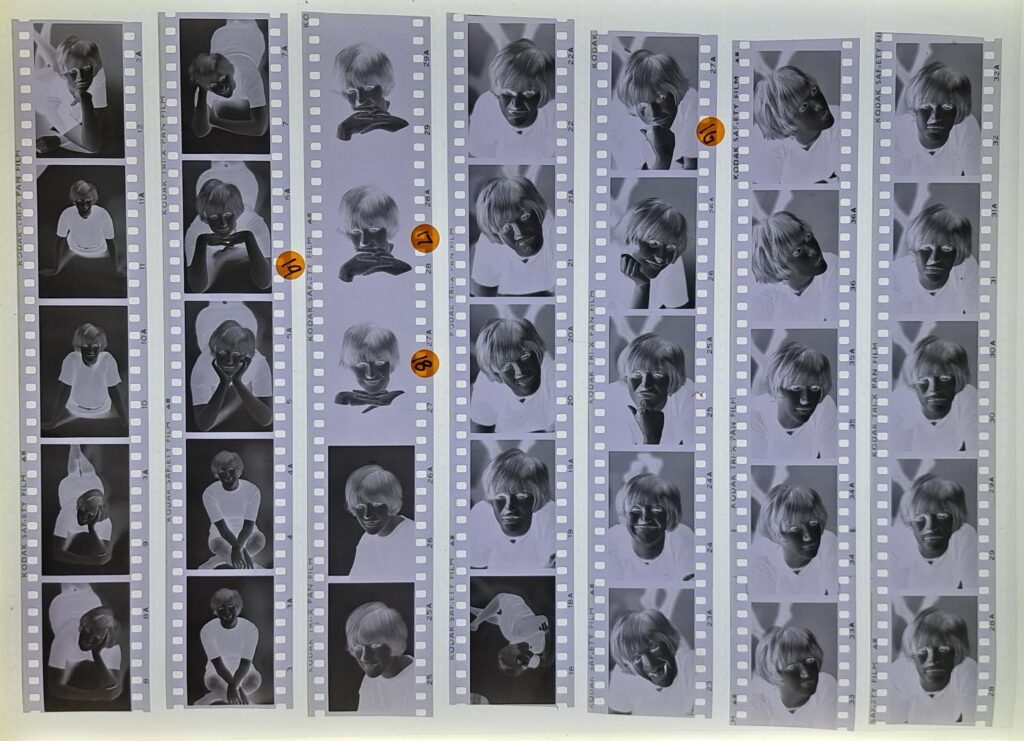

After her death, Boty’s paintings were stored away in a barn on her brother’s farm. It wasn’t until the 1990s that her work was rediscovered and she received new appreciation for her pioneering contribution to Pop Art. These photographs of Boty, as well as many others, will be available to view by researchers in our collections and research centre in due course.